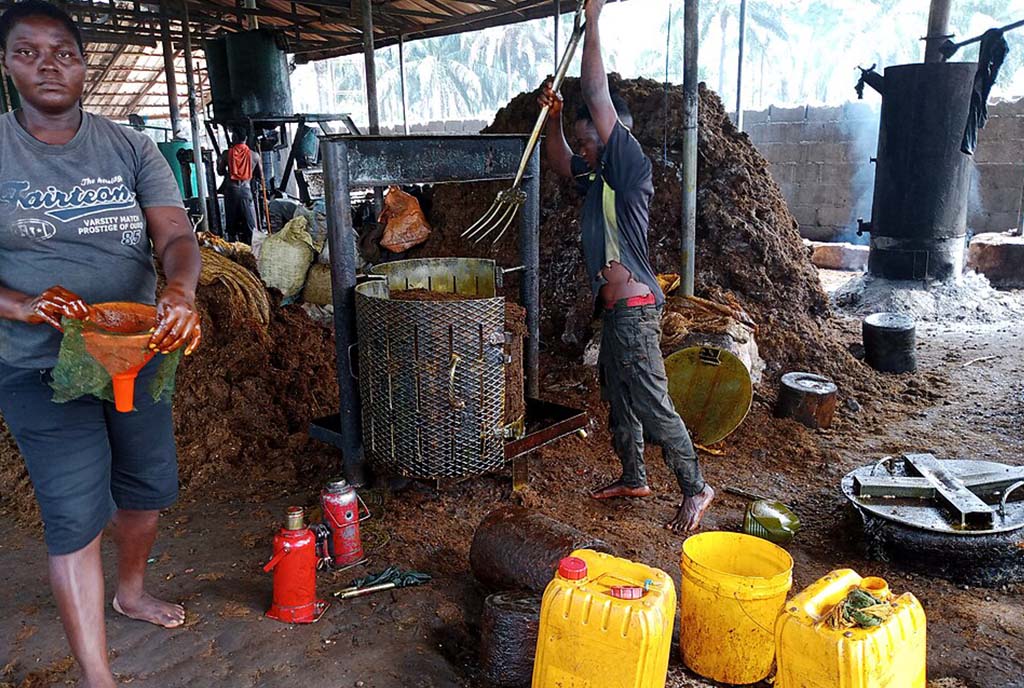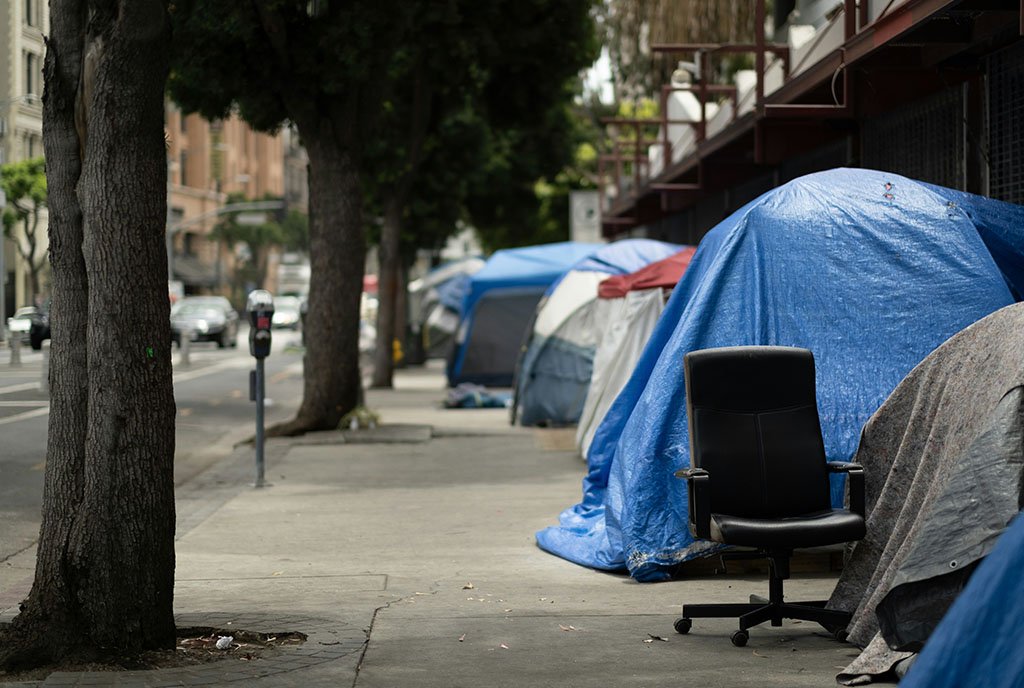

Food is the cover story. The real story is Black self-determination.
Malik Kenyatta Yakini, Up & Coming Food Co-op Conference panel
September 15, 2023
There is a wave of food co-ops opening in majority-Black communities, as NPQ has covered. But organizing a food co-op is not easy. The Gem City Market in Dayton, OH, for example, took six years to organize—and that is faster than most. For Detroit People’s Food Co-op, which opened in May, the journey from incorporating the cooperative as a legal entity to opening a physical space took 10 years—and organizing the co-op took even longer than that.
How was this done? And what lessons can others learn from Detroit’s experience? To find out, NPQ interviewed Malik Kenyatta Yakini, cofounder of the Detroit Black Community Food Sovereignty Network (DBCFSN); Lanay Gilbert-Williams, current co-op board president; and Akil Talley, the co-op’s first full-time permanent general manager. Their stories offer a valuable lens into the intricacies of community-based economic development—and the myriad challenges co-op organizers throughout the process.
A Dream Is Born
As Yakini recalls, the idea of the Detroit co-op can be traced back at least 18 years. At DBCFSN’s formation in February 2006, he says, “there were six or seven proposed goals,” including “to create a new food co-op.” The first step was starting a monthly food-buying club. Later, with a Wallace Center grant, DBCFSN conducted an initial feasibility study, completed in 2012. Incorporation followed two years later.
Early co-op goals were:
- To provide access to high-quality, healthy food options for Detroiters, particularly to Black communities with poor food access
- To generate and circulate wealth in Detroit’s Black community
- To model community ownership, community-based food sovereignty, and food justice strategies
- To serve as an incubator for start-up community-based food businesses
- To provide jobs for community members
- To serve as a community education center for information on health, wellbeing, justice, and resilience.
A Decade’s Journey
“One of the biggest obstacles was obtaining the land.”
The co-op incorporated in 2014, but that was only the first step. Yakini recalls a tour he took of a food co-op in Kalamazoo: “They had built an annex to the store where they had commercial kitchens. And they also had a community room for community meetings within the co-op. So, I brought these ideas back to our team.”
As a result, Yakini notes, the group decided “we needed a building that could accommodate more than a retail grocery store.” That vision is reflected in what is known today as the Detroit Food Commons, a two-story, 34,000-square foot building that holds a 15,000-square-foot food co-op, offices for DBCFSN, a banquet hall for community events, and four commercial kitchens that local food business owners can rent. The larger scope of the project, however, required more time to develop, finance, and build.
Yakini says the first few years after incorporation were spent largely “introducing the concept to the community. We did a lot of community engagement sessions.” In 2018, DBCFSN solidified a partnership with Develop Detroit, a nonprofit real estate developer, which accelerated fundraising and land acquisition efforts.
When asked about the biggest challenges, Yakini indicates that he often “jokingly but seriously” says, “White supremacy and capitalism.” The co-op effort, Yakini notes, enabled him to see “up close and personal how those systems interact.”
For example, Yakini explains, “One of the biggest obstacles was obtaining the land.” This may seem surprising, given that the city-run Detroit Land Bank Authority owns thousands of vacant lots. But even in a city with considerable vacant land like Detroit, getting the right land in the right location is difficult. As Yakini details, “We had four false starts.”
Local political support broke the logjam. After hearing Yakini speak about the co-op, then-City Council President Brenda Jones directed the city’s Director of Housing and Revitalization, Arthur Jemison, to work with DBCFSN to make the project happen.
Even with city backing, land still had to be pieced together. Ultimately, some parcels were purchased from Jemison’s department, some came from the Land Bank Authority, and two properties had to be acquired from private speculators, who were able to extract prices far above market value.
Raising money was another challenge. Of the $22 million needed to build the facility, about $6 million was raised from foundations, about $1 million from individuals, and the remaining $15 million from the New Markets Tax Credit community finance program and borrowed funds.
Garnering philanthropic support was the easier part of the equation. Getting bank financing was another story. Even with the partnership with Develop Detroit, some bankers were skeptical. Yakini chalks this up to institutional biases based on race and class.
As he puts it, “There are some diminished assumptions about places like Detroit that have majority-African American populations and particularly populations that are predominately low- and moderate-income and not college educated. There are assumptions about people’s eating habits and the desire to eat well.…That becomes an issue when you go to financers, and you are trying to convince them that the project can cash-flow positively. If market studies are not showing robust results, then they are not as eager.”
But common assumptions made in market studies “based on geography and race,” Yakini observes, “are often not true.” For example, market studies showed that a Whole Foods branch that opened in Detroit in 2013 would require four years to break even; it actually broke even in one year.
“We are introducing a new model of business to the community.”This challenge is a good part of why securing funding takes so much time. For Detroit People’s Food Co-op, eight of the 10 years between incorporation and store opening were spent organizing, securing land, and raising funds. Construction, by contrast, took only two years.
Maintaining community support between 2014 and 2022 was not easy. Yakini notes that co-op advocates operated “against a backdrop of a certain degree of community skepticism.…After we had been working on this thing for four to five years, there were people saying this is never going to happen, it’s a scam, they are stealing people’s money. There were all kinds of rumors.”
Sign up for our free newsletters
Subscribe to NPQ's newsletters to have our top stories delivered directly to your inbox.
By signing up, you agree to our privacy policy and terms of use, and to receive messages from NPQ and our partners.
A Dream Is Realized
The opening of the food co-op “has given a lot of Detroiters hope…that we will still have a place in the city,” observes Lanay Gilbert-Williams, the co-op’s board president.
Gilbert-Williams joined the co-op shortly after it incorporated in 2014, became an active member in 2020, and then joined the board the next year. In her position, she has sought to transition it from a “working board” to a “governing board” as the co-op opened and hired full-time staff.
She adds, “The majority of Detroiters are African American. Detroit is going through gentrification. You have a lot of people moving into Detroit who are not native Detroiters.” For example, she notes that across the street from the co-op are houses for rent for $2,500 a month, in a city where the median household income is less than $37,000.
The co-op, Gilbert-Williams says, “is unique in a number of ways,” due to its expanded offerings and number of members, which exceeds 4,000 people. “We are introducing a new model of business to the community. Even the co-ops we have had in the past—none of them have been like this co-op.”
Community excitement was evident from the capacity crowd that came out to the official grand opening the weekend of May 18—timed to correspond with Malcolm X’s birthday.
Co-op membership has grown rapidly since the store opened. Akil Talley, the store’s new general manager, estimates that membership increased from 2,500 people to 3,900 in the first two months. At the co-op’s first quarterly membership meeting after opening, live attendance was over 200 people—with others joining remotely due to space constraints.
Sales have also exceeded expectations. Pre-opening projections estimated weekly sales of $80,000. For the first five weeks, notes Talley, sales averaged over $110,000. At one point, the co-op had 38 employees to cover the rush, up from 27. As expected, sales have slowed as the opening energy dissipates, but they remain above projections. Talley adds that produce sales are still 15 to 20 percent above projections and the “prepared foods department has become a social media darling.”
Ongoing Challenges
“As a community…we are all studying and all learning together.”
At the same time, the store opening brought challenges. In addition to the usual technical challenges, the unexpected issue of volunteer turnover emerged. As Gilbert-Williams explains, “There are a lot of [volunteers] who have been actively a part of this co-op, who seem to have had in their mind, ‘I just need to get to the co-op opening and then I can let go and relax’.”
This was a surprise. As Gilbert-Williams details, “We kind of had to scramble….We didn’t put succession plans in place for different things.” As a result, she adds, “We now have member-owners stepping into positions that they were not in until the co-op opened. So, some committees feel brand new.”
Gentrification presents another challenge. As Yakini puts it, “I don’t think we appreciated the degree to which to the North End community would change and the degree to which young Whites were moving in.” The co-op, as Yakini makes clear, is multiracial by design: “We were holding a couple of things simultaneously. We are trying to build power for Detroit’s Black community, and we were building a model that is not exclusively Black.”
The co-op has taken steps to welcome White members while maintaining a Black-led orientation. One, Yakini notes, is supporting White member-owners to create “what we call the antiracist working group.”
Gilbert-Williams adds that there is also a Black caucus that helps develop new Black leaders within the co-op; she adds that three of nine co-op board members are currently appointed by the DBCFSN. This provision, she says, is “a really big deal, because [DBCFSN] is a Black-serving, Black-led organization that was established before the co-op. So having some of those board members involved really helps board members remain focused on why we are here and why we do what we do.” This provision is temporary, but Gilbert-Williams says she’d like to make it permanent.
A third key challenge is implementing systems and processes, such as permanent governance policies. Gilbert-Williams notes that their peers in Dayton alerted co-op leaders to this early on, but they didn’t get the importance until after opening. In retrospect, she remarks, “I would say to other co-ops, ‘Listen, when somebody with wisdom and experience is standing in front of you and saying something…take what they say for granted and run with it.’”
Looking to the Future
Challenges aside, optimism abounds. Sales are good, and the co-op was able to hire a general manager from Detroit with nearly two decades of experience in the grocery industry.
The co-op has also been set up well financially. The owners of the building are Develop Detroit and DBCFSN, and the co-op pays a below-market lease rate. Additionally, many start-up expenses (refrigeration units and other store improvements), which Yakini estimates cost as much as $1 million, were rolled into the project development budget, enabling the co-op to “almost open debt free.”
Talley notes that operating a co-op is different than operating a Whole Foods branch or similar store. Finances, and even pricing in a branch operation are generally the responsibility of company headquarters staff. By contrast, he notes, “In the co-op world, there is a lot of dependency on the general manager in that role and leadership within the store to make sure the systems are moving smoothly.” Talley says, “It’s challenging, but in very good ways.”
Talley adds that he intends to host events onsite, such as weekend grilling and music, in the store’s parking lot to maintain a community feel beyond a “typical grocery experience.” In terms of overall store functioning, it is early days, but Talley is hopeful that the co-op can break even by the end of its third year of operations.
From a co-op governance standpoint, Gilbert-Williams also exudes optimism: “What I say to the member-owners is that a co-op is one big study group with a lot of small study groups. Every committee is a study group. As a community…we are all studying and all learning together.”
Detroit, she adds, “is already better…for all our coming together.” She concludes, “Anybody involved is forever changed. If we keep coming together and…listen to each other, study together, and learn together, I think we’re good.”












